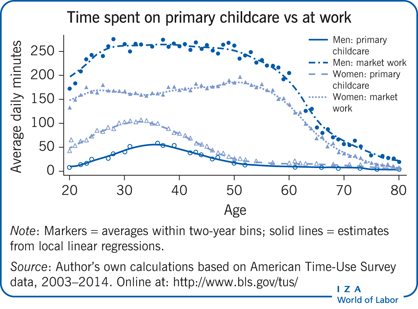Elevator pitch
Older people in developed countries are living longer and healthier lives. A prolonged and healthy mature period of life is often associated with continued and active participation in the labor market. At the same time, active grandparents can offer their working offspring a free, flexible, and reliable source of childcare. However, while grandparent-provided childcare helps young parents (especially young mothers) overcome the negative effects of child rearing on their labor market participation, it can sometimes conflict with the objective of providing additional income through employment for older workers, most notably older women.

Key findings
Pros
Healthy and long-lived older people can offer a free, reliable, and flexible source of childcare to parents.
Parents participating in the labor market in developed countries make extensive use of grandparent-provided childcare arrangements.
Grandparent-provided childcare helps young working parents, particularly young mothers, to remain attached to the labor market, thus overcoming the negative effects of child rearing on female labor supply.
Cons
Grandparent-provided childcare reduces the labor supply of senior workers, especially those grandmothers who are already less attached to the labor market, e.g. working part-time.
Reliance on informal childcare provided by grandparents may reduce the geographic mobility, and consequently job opportunities, of households.
There is a trade-off between grandparent-provided childcare by senior workers and their own labor supply, particularly when the potential unsustainability of living off welfare and pension provision is taken into account.